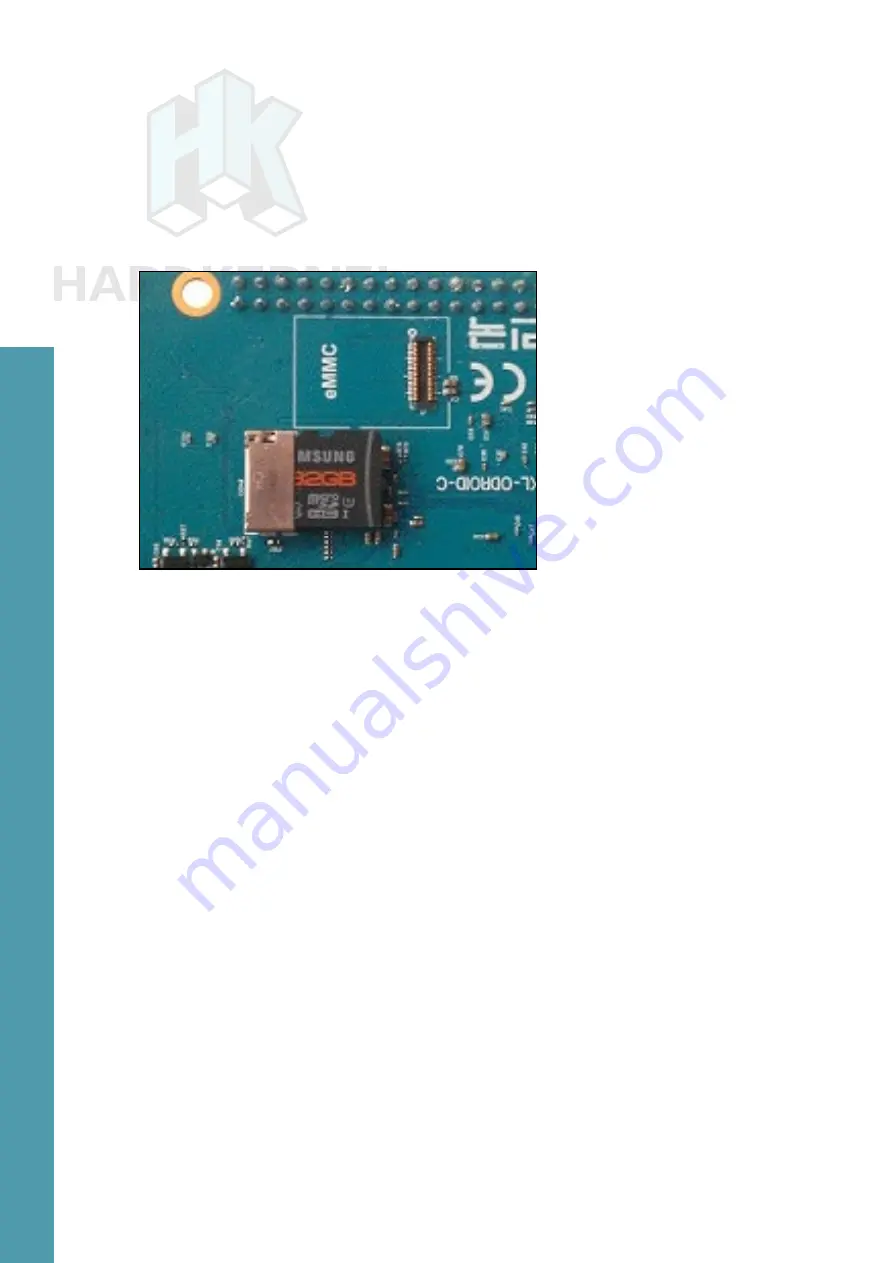
9
ODROID C1 USER MANUAL
Micro Secure Digital (microSD) card slot
There are two different methods of storage for the operating sys-
tem. The first is by using a microSD Card and another is by insert-
ing an eMMC module, which is normally used for external storage for
smartphones and digital cameras. The ODROID-C1 can utilize a new-
er UHS-1 SD model, which is about twice as fast as a class 10 card.
C1 closeup with microSD card attached
There are some microSD cards which cause an additional boot
delay time of around 30 seconds. According to our testing, most Sandisk
microSD cards don’t cause a long boot delay. The ODROID-C1+ mod-
el is compatible with a wider array of microSD cards than the original
C1.
5V 2A DC input
The DC input is for 5V power input, with an inner diameter of
0.8mm, and an outer diameter of 2.5mm. The ODROID-C1 consumes
less than 0.5A in most cases, but it can climb to 2A if many passive
USB peripherals are attached directly to the main board.
USB host ports
There are four USB 2.0 host ports. You can plug a keyboard,
mouse, WiFi adapter, storage or many other devices into these ports.
You can also charge your smartphone with it! If you need more than 4
ports, you can use a powered external USB hub to reduce the power
load on the main device.
MicroHDMI port
To minimize board size, we used the Type-D micro-HDMI con-
nector. A regular HDMI cable may be used with a suitable microHDMI
adapter. The C1+ model uses a standard Type-A HDMI connector.
Chapter 1














































